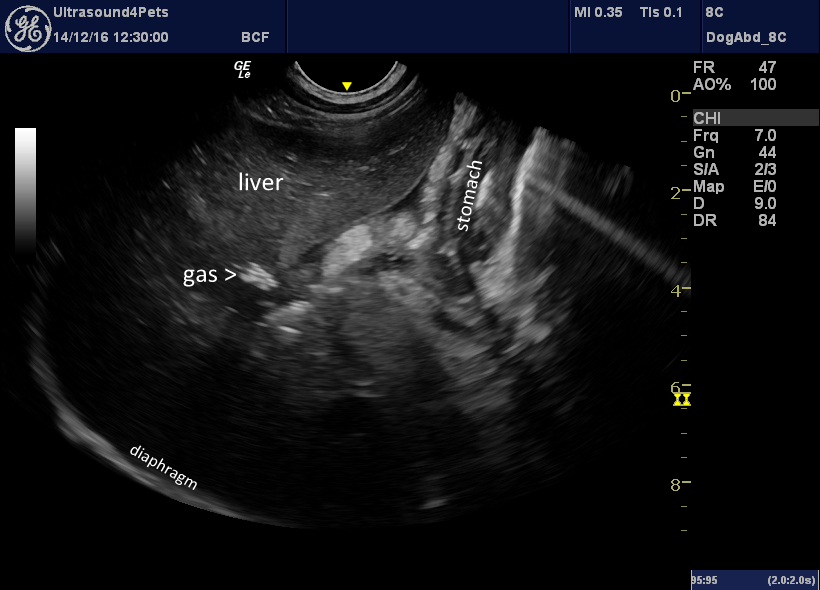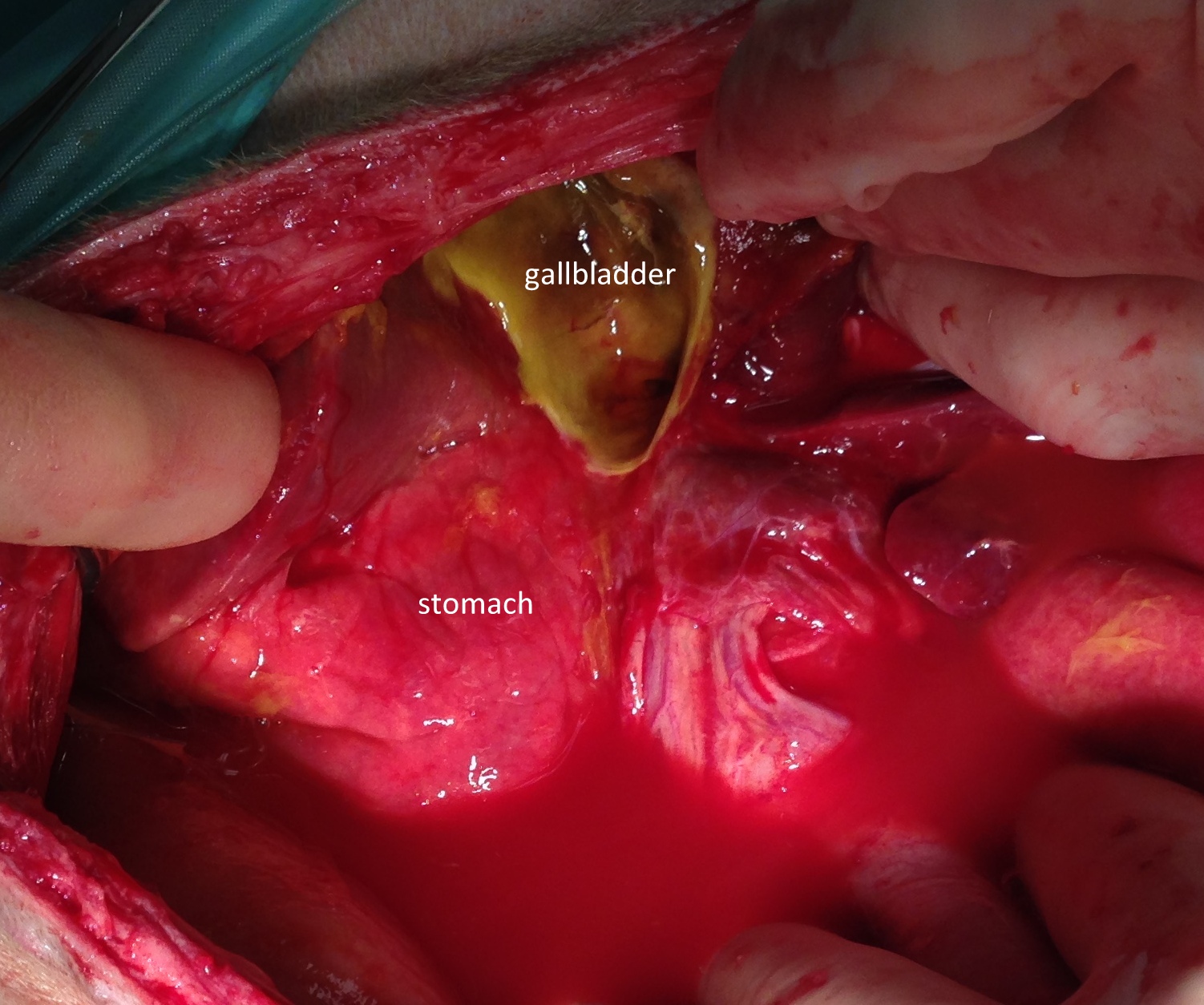Gallbladder rupture following gastric dilation with volvulus in a dog
This patient suffered a GDV and was rescued with prompt intervention and surgical derotation with pexy. It was noted at surgery that the gallbladder was very distended. So far so good. She continued to do well for about 72 hours before deteriorating: inappetence, vomiting, increasing lethargy. Again management by the primary care team was impeccable and it was quickly established that she had an abdominal effusion and that the bilirubin content of this effusion was higher than that of plasma. A high index of suspicion for bile peritonitis was established.
On further sonography, the stomach appears to be normally-positioned and not grossly dilated. The pylorus is on the right. There is an effusion and also gas densities in the porta hepatis:

sagittal plane view of the cranial abdomen
On cytology, not only are there bile pigment crystals -also present are sparse bacterial rods: presumably the source of the gas. This is a septic and bile peritonitis.
However, there doesn’t appear to be an obvious GI perforation and the hyperechoic change in abdominal fat appears to be centred on the porta hepatis.
Inspection of the gallbladder is revealing:
The empty remnants of the gallbladder wall are flapping around in the effusion.
In the literature is one previous report of gallbladder wall necrosis subsequent to GDV:
https://www.ncbi.nlm.nih.gov/pmc/articles/PMC3711169/
In that case, torsion of the gallbladder was demonstrated at post-mortem.
The present case was taken to surgery, whereupon the gallbladder was removed and the remainder of the abdomen inspected before flushing.

Although no torsion was present at this stage it seems likely that decompression at the time of rupture might have led to spontaneous de-rotation. Alternatively, wall necrosis might have been a sequel to extreme distention. Either way I presume that the insult to the gallbladder wall was incurred during the original GDV but rupture followed a few days later.
The presence of bacterial peritonitis is interesting. Bile from normal, healthy dogs is known to harbour bacteria on occasion:
https://www.ncbi.nlm.nih.gov/pubmed/19925578
Thus it may be that this was the origin of sepsis in the present case. Bacterial translocation during GDV is an alternative.





